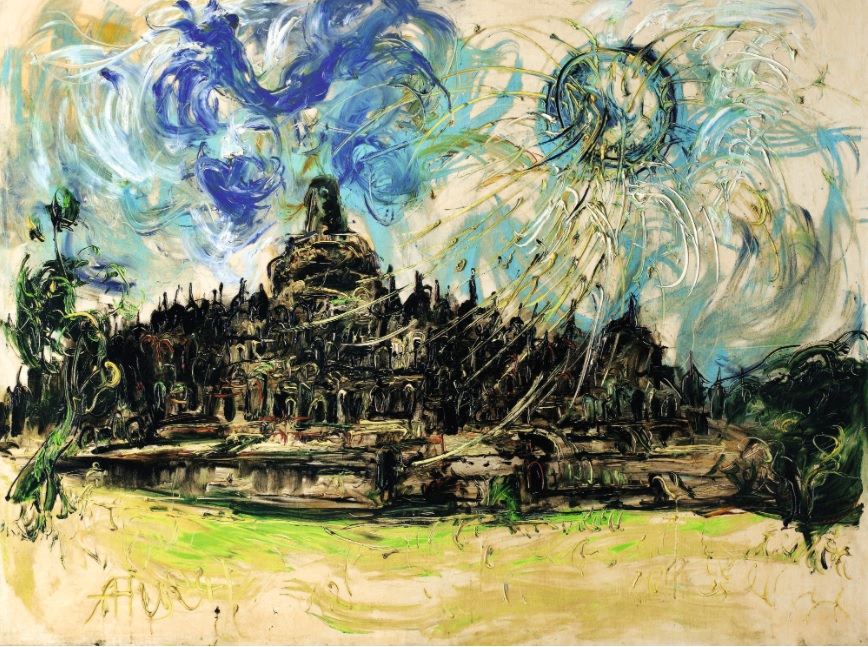Borobudur and The Sun was painted by Affandi, an Indonesian Painter (1907-1990). Affandi is famous for his painting technique that squeezes paint directly from the tube to the canvas. Although his painting style is known as expressionist, he considered himself as a realist who portrays realities around him as they are. His paintings are also known as articulations of nationalistic values.
Borobodur and The Sun portrays one day in Borobudur with a yellow sunbeam combines with light and dark blue sky. Borobudur is the largest Buddhist temple in the world, that was built in the 9th century. Affandi presents Borobudur not only as beautiful scenery but rather as an expression of majesty in everyday life. The blend of nature and temple suggests a cosmic balance, as Sumichan (an author and editor of a book about Affandi) says, a “unity with the cosmological forces through art”.
The inspiration of Affandi’s painting is not a beautiful thing, but an expressive matter, like suffering. Some subject matters of his paintings are an old woman, a beggar, black mountains, fighting animals, and withered flowers. Eric Newton–British art critic (1893-1965), mentioned Affandi was “wilder than Kokoschka, as human and passionate as Van Gogh”.
Up to now, Affandi’s painting is still inspirational to whom is interested in life and its expression. His paintings successfully present what is called by John Dewey (1934) as an experience, a fulfilled experience, “a whole…carries with it its own individualizing quality and self-sufficiency”. Affandi’s painting is also a perfect exemplar of artwork that sourced from everyday life experience, that expresses the everyday events, doings, and sufferings.


